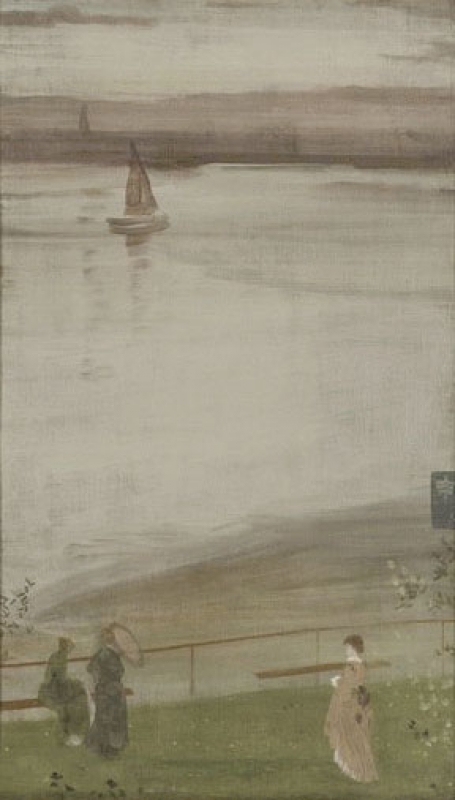Variations in Violet and Green dates from 1871. It was signed and dated '71'. 1
According to Whistler's mother, Anna Matilda Whistler (1804-1881), one afternoon in the summer of 1871 she 'felt too feeble to sit' for her portrait (Arrangement in Grey and Black: Portrait of the Painter's Mother [YMSM 101]) so Whistler took her for a trip down the Thames. When they returned, as she wrote:
'the river in a glow of rare transparency an hour before sunset, he was inspired to begin a picture & rushed upstairs to his studio, carrying an easel & brushes, soon I was helping by bringing the several tubes of paint he pointed out that he should use & I so fascinated I hung over his magic touches til the bright moon faced us from the window and I exclaimed oh Jemie dear it is yet light enough for you to see to make this a moonlight picture of the Thames.
I never in London saw such a clear atmosphere as this. … So now Kate I send you by this mail steamer an ["]Athenaeum" a weekly paper with a criticism on these two pictures exhibited now in "The Dudley Gallery" it is so true. The Moonlight is not more lovely than Sunset tho the Critique gives it only the mede [sic] of praise.' 2
The 'Moonlight' described by Mrs Whistler was exhibited in London at the Dudley Gallery in 1871 (cat. no. 265) as 'Harmony in Blue-Green - Moonlight' and is considered to have been Nocturne: Blue and Silver - Chelsea [YMSM 103]. The other picture was Variations in Violet and Green, the picture under discussion.
Whistler's mother mentioned that in the summer of 1871, four recent paintings, 'took Jemie out often[,] work in the open air was like the renewal of Etching & gave zest to Studio at intervals.' 3 These probably included Variations in Violet and Green [YMSM 104], as well as Nocturne: Blue and Silver - Chelsea [YMSM 103] and Variations in Pink and Grey: Chelsea [YMSM 105].
Last updated: 31st December 2020 by Margaret






